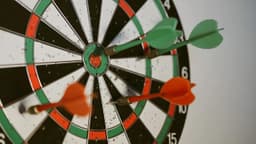Euro Symbol Placement: Before or After the Number?
When writing monetary amounts in euros, you need to know where to place the euro symbol (€) in relation to the numeral (e.g., 300). Let's clarify the correct placement.
The Correct Placement
The euro symbol (€) should always be placed before the number. Therefore, you write it like this:
€300
Not like this:
300€
This placement aligns with the guidelines set by the European Central Bank. Following this rule ensures consistency in writing monetary amounts in euros.
Why Does It Go Before the Number?
Several reasons explain the placement of the euro symbol before the number:
-
Consistency: Most currencies place their symbols before the number. For example, we write "\$300" for US dollars and "£300" for British pounds. The euro follows this pattern.
-
Readability: Placing the symbol before the number enhances clarity. To recognize an amount as euros, seeing "€300" is immediate compared to "300€."
-
Machine readability: Machines can more easily interpret monetary amounts when the symbol precedes the number, as it is a distinct character.
Exceptions to the Rule
There are exceptions to the rule regarding the placement of the euro symbol:
- In a vertical column, the symbol can be placed after the number to save space.
- In tables, it can be placed after the number to align with other currency symbols.
- When indicating a range, the symbol can appear before the first number and after the last number. For instance, you might write "€300 - €500."
The euro symbol typically goes before the number, with a few specific exceptions. Follow this guideline for accurate monetary writing in euros.












